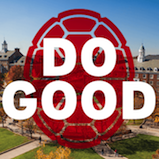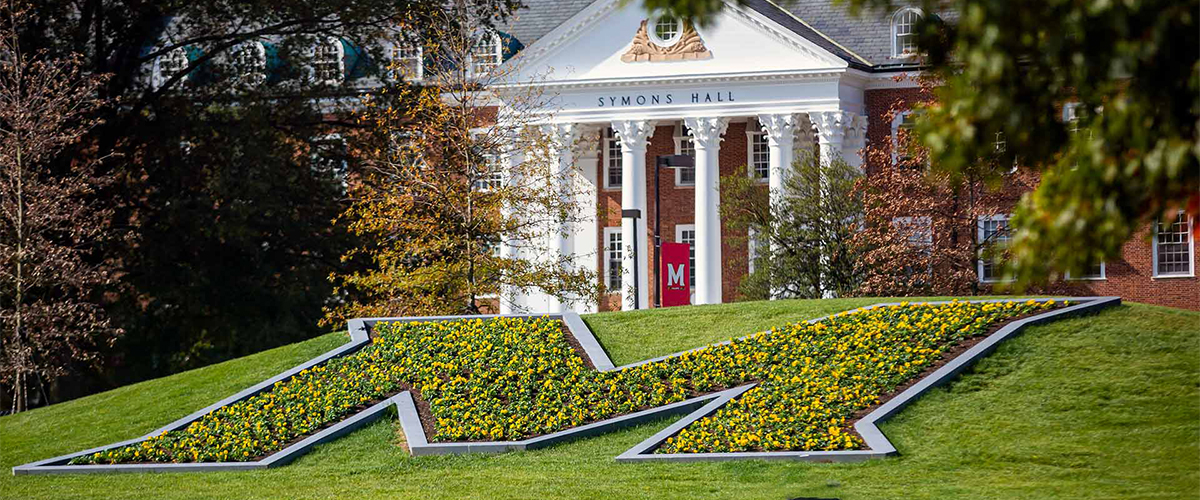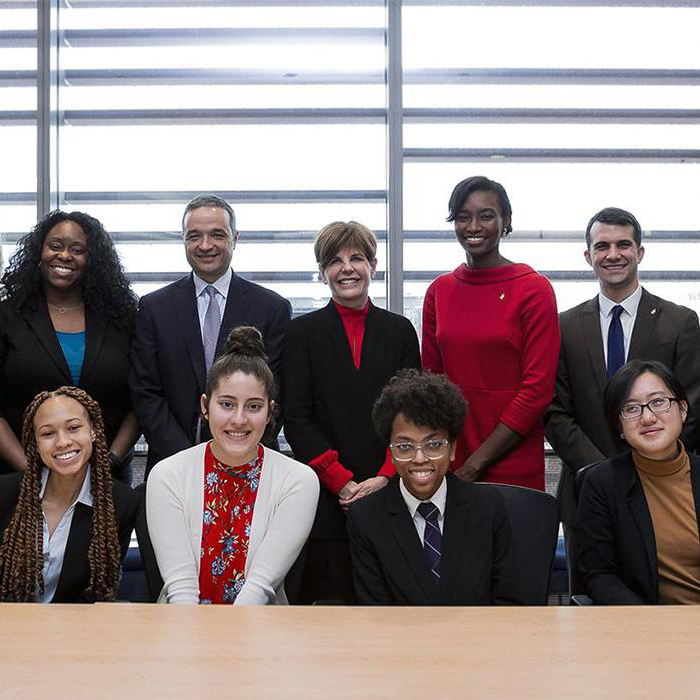1912
On Nov. 29, a fire that started at a Thanksgiving dance destroys all dormitory rooms, half of the classrooms and offices and most of the college records, but no one is injured or killed. Silvester resigns. Thomas H. Spence, a professor of languages, serves briefly as acting president.
1913
Harry J. Patterson, AES director, is appointed president.
Gamma Pi becomes the first fraternity established on campus.
1915
Chunjen Constant Chen, enters MAC as its first Chinese student. He later teaches Chinese at the university (1956-67).
1916
The state takes full control of the college and changes its name to the Maryland State College of Agriculture.
Elizabeth Hook and Charlotte Vaux, the first women students, enroll.
1917
Albert F. Woods is named president. He creates seven schools, each with its own dean: agriculture (now the College of Agriculture and Natural Resources,) a reorganized school of engineering and mechanic arts, liberal arts, chemistry, education (now the College of Education), home economics and the Graduate School.
1919
Grace B. Holmes is the first woman to receive a bachelor’s degree.
1920
The College Park and Baltimore campuses are consolidated. Woods becomes president of the new University of Maryland. The Graduate School awards its first Ph.D. degrees, and total enrollment reaches 522 students, including 22 women.
Sigma Delta becomes the first recognized sorority.
The student newspaper, beginning its eighth iteration, is reborn as The Diamondback.
1922
Dean of Women Adele H. Stamp, namesake of the student union, arrives on campus. Stamp helps expand the number of female students from 103 in 1922 to 4,162 in 1960, when she retires.
1925
The Association of American Universities grants accreditation to UMD.
1926
Raymond A. Pearson becomes president. UMD greatly expands in Baltimore and College Park, with 13 new buildings and additional acreage.
1932
Ritchie Coliseum opens to improve gymnasium facilities. A library, Shoemaker Hall, now the Counseling Center, opens.
1933
Members of the Class of 1933 donate the money for Testudo, the original campus statue of the diamondback terrapin that became the university’s mascot. The 300-pound bronze statue is placed on a pedestal in front of Ritchie Coliseum.
1935
H.C. “Curley” Byrd is appointed acting university president, and leads a massive expansion of buildings and enrollment. He began his 43-year career at UMD with a two-week stint coaching football, taught English and history, was athletic director and served as an assistant to Raymond Pearson before becoming president. He was also a segregationist who fought integration and supported “separate but equal” educational facilities for white and Black students.
1938
The School of Commerce, now the Robert H. Smith School of Business, is established.
1939
Maryland Hillel, the hub for Jewish life on campus, opens.
1944
The Health & Human Performance Building opens with classrooms, a gym and space for ROTC activities. … it was later renamed Reckord Armory for Maj. Gen. Milton Reckord, adjutant general of the Maryland National Guard.
1946
Under the new GI Bill, enrollment doubles to nearly 10,000 students, with three-fourths living off campus.
1947
The College of Journalism, which now bears the name of newspaper publisher Philip Merrill, is founded.
1949
The College of Physical Education, Recreation and Health, now the School of Public Health, is established.
1950
Byrd Stadium, now called Maryland Stadium, opens.
1951
With the assistance of the NAACP and lawyers such as Thurgood Marshall, Hiram Whittle, the first African American undergraduate student, enrolls. Three African American students receive master’s degrees in education.
1952
Parren Mitchell, the first African-American graduate student to take all of his classes at College Park, graduates. He becomes a civil rights leader, Maryland’s first Black member of Congress and the founder of the Congressional Black Caucus. The Art-Sociology Building, which opens in 1976, is later renamed in his honor.
Memorial Chapel opens, dedicated to Terps who died while serving in the U.S. armed forces.
1953
Under head coach Jim Tatum, the Terrapins football team is declared national champions with a 10-1 record.
1954
Thomas B. Symons is acting president of the university for nine months before Wilson H. Elkins takes over as president. Elkins emphasizes basic subjects and strict academic standards, unveiling an academic probation plan in 1957 and sending 18% of undergraduate students home. By 1964, 77% of freshmen are from the top half of their high school classes.
The student union, later named for Adele H. Stamp, dean for women, is built.
1955
Elaine Johnson arrives as one of seven Black students and in 1959 becomes the first African American female undergraduate to complete her degree, in education.
The University Senate is officially established.
Cole Field House opens.
1957
Queen Elizabeth II and Prince Philip of Great Britain visit campus for a football game as guests of Elkins and Maryland Gov. Theodore McKeldin. The contest becomes known as the Queen’s Game.
1958
McKeldin Library is completed.
1963
Darryl Hill becomes the first Black football player at Maryland and breaks the color barrier in the Atlantic Coast Conference. Two years later, Billy Jones accomplishes the same in basketball.
1965
The Tawes Fine Arts Building opens.
The Graduate School of Library Sciences, now the College of Information Studies (iSchool), is founded.
1966
The General Honors Program, precursor to the Honors College, begins.
Rebecca Carroll is the first African-American woman to earn a doctorate, in education.
1967
The School of Architecture, now the School of Architecture, Planning and Preservation, is founded.
1969
Hagerstown Hall becomes the first co-ed residence hall, a significant change from restrictive rules previously placed on female students.
1970
Charles Edwin Bishop is named first chancellor of the College Park campus.
National Guard troops are called to campus to respond to anti-Vietnam War protests. For much of May, clashes continue among students, police officers and guardsmen.
1971
The Nyumburu Cultural Center, a hub for Black social, cultural and intellectual events and programming, opens. “Nyumburu” means “freedom house” in Swahili.
1972
The Undergraduate Library opens and is named in 1980 for R. Lee Hornbake, a faculty member who rose to vice president for academic affairs for the University System of Maryland.
Shuttle-UM is established by the Black Student Union to promote security for students walking through campus during the evening hours.
1974
UMD economics Professor and Vice Chancellor of Administrative Affairs John W. Dorsey is named acting chancellor.
1975
Physics Professor and University of Massachusetts administrator Robert L. Gluckstern becomes chancellor.
1976
Four years after the passage of Title IX prohibits sex-based discimination in federally funded schools and programs, Paula Girven and Jane Connolly are the first women to recieve athletic scholarships, in track and field and basketball, respectively.
Disability Support Services, now Accessibility and Disability Support Services, is established to provide equal access to UMD programs.
The University of Maryland celebrates the U.S. bicentennial by establishing the M Circle on Campus Drive.
1981
School of Public Affairs, now the School of Public Policy, is founded.
1982
UMD mathematics Professor William E. Kirwan is named interim chancellor.
John B. Slaughter, an engineer and National Science Foundation director, becomes UMD’s first African American chancellor.
1986
Terp basketball star Len Bias dies of complications from cocaine intoxication, prompting changes in everything from UMD’s academic standards to national drug policy.
The College of Arts and Humanities is formed in a campuswide academic reorganization following the dissolution of the Division of Arts and Humanities.
African American studies, anthropology, economics, geography, government and politics, hearing and speech sciences, criminology and criminal justice, psychology and sociology merge in the new College of Behavioral and Social Sciences.
1988
The five University of Maryland campuses are reorganized to form the University of Maryland System, now the University System of Maryland; College Park is designated the flagship university, and the title of chancellor is changed to president.
The university establishes its own alumni association.
1989
William E. Kirwan begins serving as president.
1993
The business college moves from Tydings Hall to the new Van Munching Hall, named for benefactor Leo Van Munching Jr. ’50.
The College Park-University of Maryland Metro station opens, connecting the university to the D.C. region’s growing mass transit network.
1994
The College of Engineering is renamed the A. James Clark School of Engineering in honor of the 1950 alumnus and benefactor.
1998
The Office of Lesbian, Bisexual, and Transgender Equity, now the LGBT Equity Center, is established.
The Robert H. Smith School of Business is given the name of its 1950 alumnus and benefactor.
1999
Clayton Daniel (Dan) Mote Jr., an engineering professor and vice chancellor at the University of California, Berkeley, is inaugurated as president.




